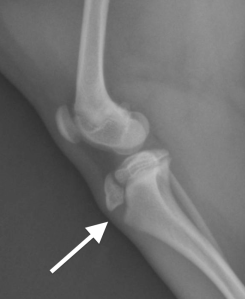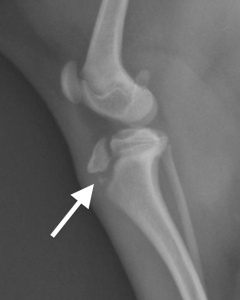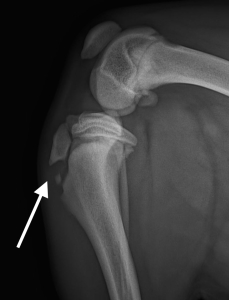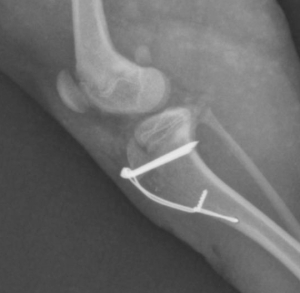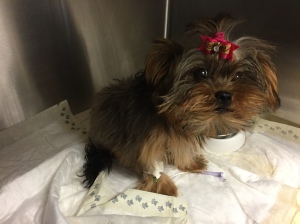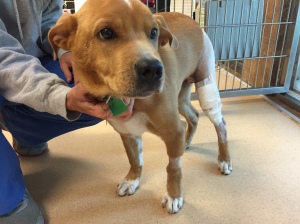Pet Remembrance Day Can be a Celebration of Life!

Let us take a moment to remember all our fur babies that have passed over the Rainbow Bridge for Pet Remembrance Day. This does not have to be a sad day but a day to reflect on all the joy they brought to our lives.
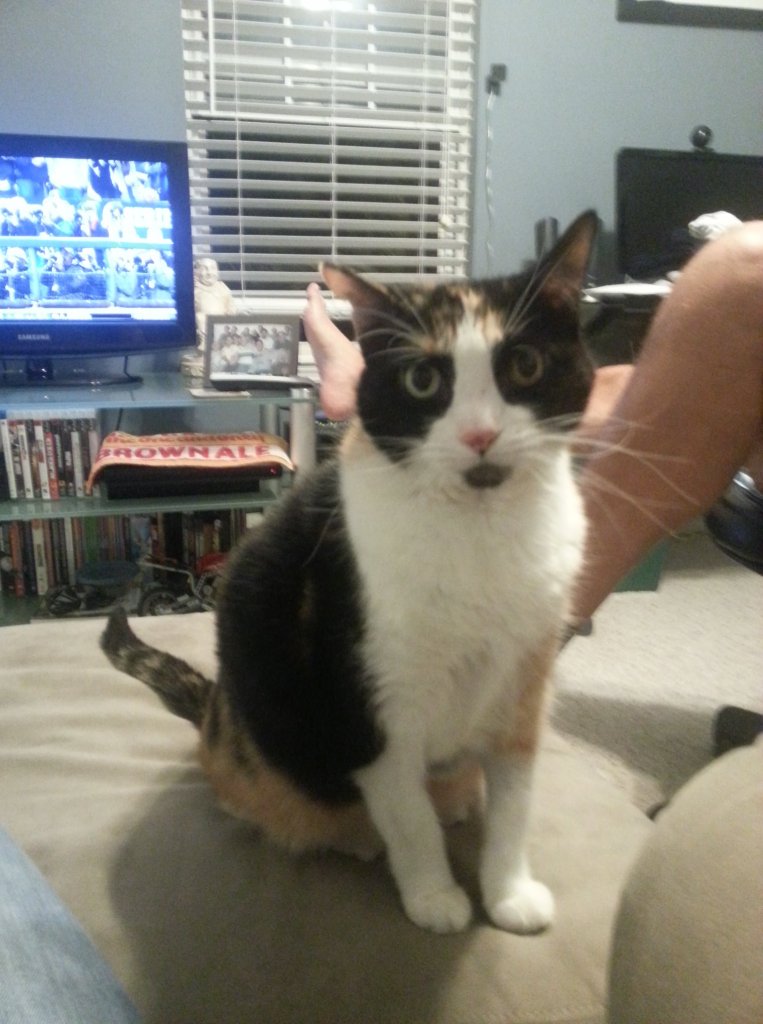
Pets play important roles in our lives. They are not only our companions, but they are family. They brighten up our days, they keep us healthy, they remind us not to take ourselves too seriously, they keep us responsible and most importantly they provide the best example of unconditional love.
So, in honor of this special day, I am going to take a moment to remember my beloved Riley, Blackjack, and Chloe. They were my first “adult” fur babies and I can not begin to explain how much joy and love they brought into our lives, each and every day we were lucky enough to have them.
I am going to leave you with one of my favorite quotes by Dr. Seuss, “Don’t cry because it’s over, smile because it happened.”

-Stephanie Albanese
Hospital Administrator
Internal Medicine/Cardiology/Oncology Practice Manager
Heat Stroke by Dr. Shannon Graham
Over the past couple of months in quarantine, our pets have been getting extra attention, walks through the neighborhood, fetching in the backyard, and joy-rides to pick up our to-go meals. Whether you’re continuing to work from home this summer, exploring the Lowcountry’s parks and beaches, or enjoying a meal on one of the many dog friendly restaurant’s patio, we need to discuss ways to keep our pets safe during these hot and humid summer months.
As an emergency veterinarian in Charleston, I have seen many patients rushed to Veterinary Specialty Care due to heat exhaustion or heat stroke. Heatstroke is characterized by marked increase in body temperature (>105.8°F) from exposure to a hot or humid environment or strenuous exercise. Animals cool themselves by panting, which removes moisture from their lungs to reduce their temperature. Animals are unable to cool themselves by panting when the humidity is high.
Increased risk factors of a dog suffering from heat stroke include: strenuous exercise, high environmental temperature, high humidity levels, lack of acclimation to a new environment (pets on vacation, spring), confinement with poor ventilation (cars, garage, dog house), and lack of shade and/or water. Also, dogs that are older, overweight, or have heart disease or respiratory disorders (tracheal collapse, brachycephalic) are predisposed to heat stroke as well. Our “smushed face” dog breeds like bulldogs, shih tzus, and pugs are undoubtably adorable, but they have a higher risk of overheating due to their short, flat muzzle preventing them from panting effectively.
Initial signs that your pet may be overheated are heavy panting, restlessness, glazed eyes, excessive thirst, and profuse drooling. Patient with heat stroke have progressive signs of lethargy, incoordination, collapse, vomiting, diarrhea (often bloody), bruising, seizures, or unconsciousness. This marked elevation in body temperature damages multiple organ systems including the gastrointestinal tract, kidneys, liver, coagulation (blood clotting) system, and brain. Pets may develop bruising and bleeding, low blood glucose, organ failure, loss of normal barriers from severe infection, brain damage, and death.
If you think that your pet is showing signs of heat stroke, then immediately start cooling efforts by moving your pet into a shaded or air-conditioned area, apply cool (not cold) water or towels soaked with cool water around the neck, chest, belly, and paws, and using a fan. Do not bathe or saturate them with cold or ice water, as cooling them too quickly can cause serious complications. You should provide them access to cool water, but do not force them to drink it. Then, take your pet to your closest veterinary hospital.
The best ways to avoid heat stroke is by avoiding exercise during hot or humid days, providing access to fresh, cool water and shade, allowing your pets to slowly adjust to an increase in activity level and offering time to rest, and never leaving your dog in the car alone. I hope these tips are helpful for everyone in your family to enjoy a safe and fun summer!
Hoppy Easter: A Guide to a Paw-fect Holiday
By Simone Carter and Gabi Ingle
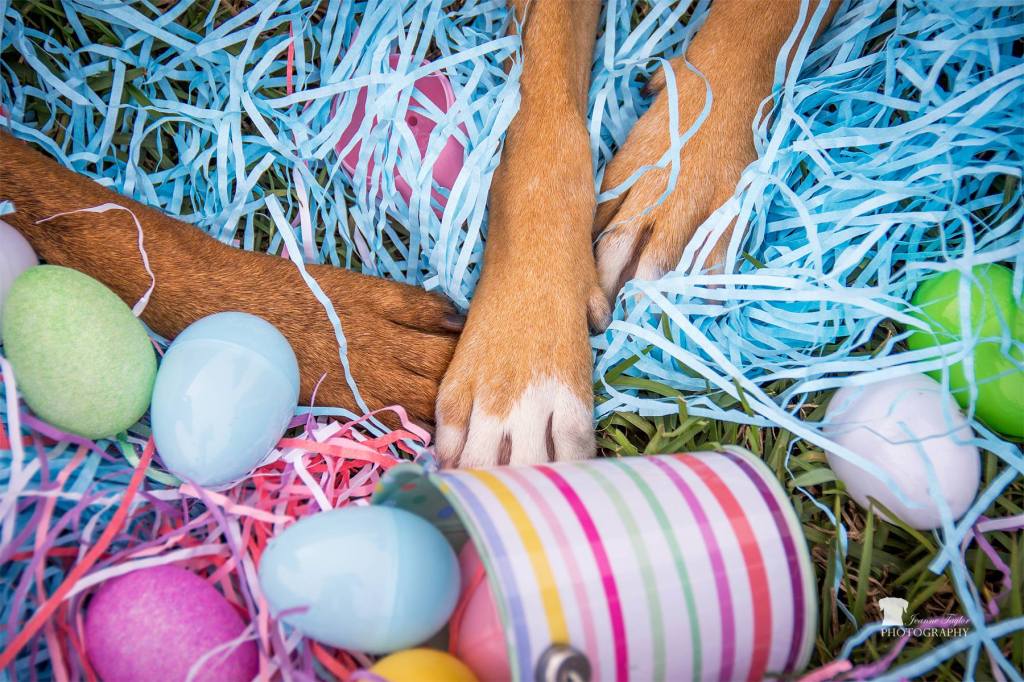
What did the Easter Bunny say to the carrot? It’s been nice gnawing you!
Easter isn’t just for bunnies! There are lots of paws-itively fun ways to include your dogs in Easter festivities, like dog-friendly decorations, activities, and treats!
Did you know dogs see Easter décor differently than their 2-legged friends? According to Stanley Coren, PhD, DSc, FRSC, of Psychology Today’s Canine Corner, “Dogs do see colors, but the colors that they see are neither as rich, nor as many as those seen by humans.” Based on research conducted by Jay Neitz, of the Neitz Color Vision Lab at the University of Washington, The American Kennel Club recommends blue and yellow items for optimal visibility by dogs. Blue and yellow decorations are more likely to catch your dogs’ eyes, and decorations in shades of red are less likely to grab their attention.
When left unattended, plastic Easter eggs can be dangerous for dogs. As a fun and safe alternative to an Easter egg hunt, hide yellow tennis balls in an area safe for play. Your dogs will have a ball (or several)! And if your dogs hound you for treats, try this carrot pupcake recipe from Veterinary Specialty Care’s Outreach Coordinator and Client Advocate, Natalie Garber. Bone appetit!
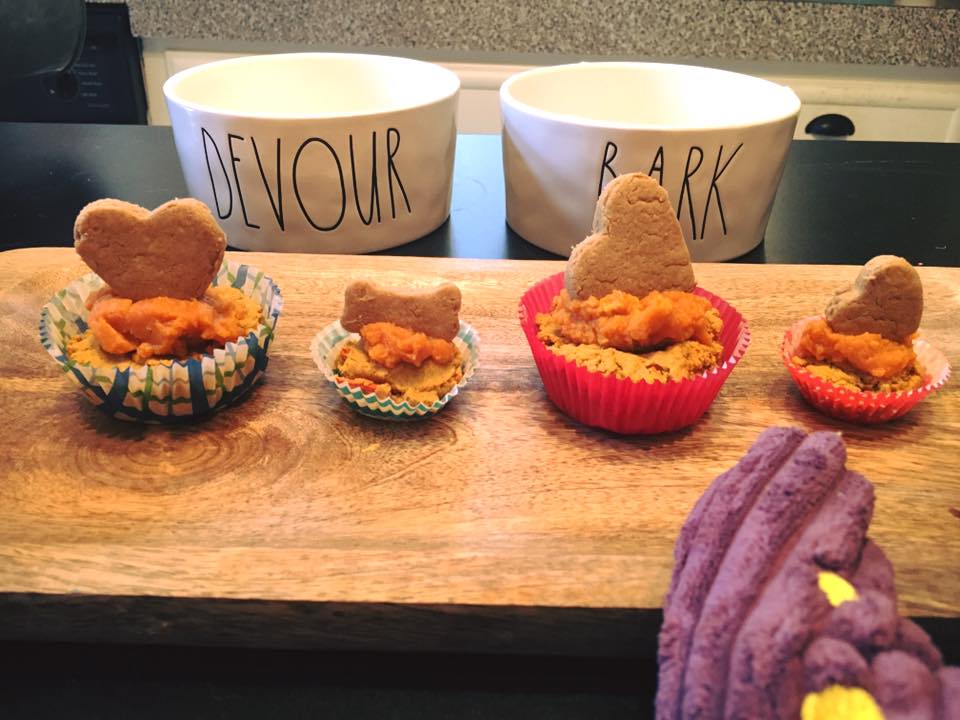
Easter Carrot Pupcakes
- 1.5 c. grated carrot (reserve .5 c to sprinkle on top)
- *1.5 c. whole wheat flour
- 1/4 c. rolled oats
- 2 tbsp. cinnamon
- 1/4 c. applesauce
- 2 free-range eggs (beaten)
*If your pup has an intolerance or allergy to wheat or grain you can easily substitute a gluten-free flour option such as oat, coconut or brown rice flour. Amount of flour and length of baking time may vary accordingly.*
Frosting - 1/2 c. low-fat cream cheese (beaten)
(or as shown in the photo, top each pupcake with 1 teaspoon (or less) of canned packed pumpkin)
Directions - Preheat oven to 350 degrees – spray 12 mini muffin cups or 6 standard muffin cups (or line with paper liners)
- Combine 1 c. grated carrot, applesauce and beaten eggs.
- In a separate bowl, combine flour, oats and cinnamon.
- Add wet ingredients to dry ingredients, slowly, to make pupcake batter.
- Spoon batter into greased muffin tins; batter does not rise
- Bake 20 minutes, cool for 5 minutes.
- After pupcakes are cooled, frost with beaten cream-cheese (or canned-packed pumpkin)
- Decorate with remaining grated carrot
As Easter rolls around, we also want draw your attention to common household toxins to avoid. According to the ASPCA’s Animal Poison Control Center, Easter is one of the busiest days for chocolate intoxication calls, topping Christmas, Valentine’s Day, and even Halloween! Chocolate is dangerous for our fur babies because it includes theobromine and caffeine, which they cannot easily metabolize. If you suspect your dog may have ingested any amount or kind of chocolate, please contact your veterinarian or Animal Poison Control at (888) 426-4435. According to Ahna Brutlag, DVM, MS, DABT, DABVT, Associate Director of Veterinary Services of the Pet Poison Helpline, some clinical signs to be on the lookout for include but are not limited to: vomiting, diarrhea, increased thirst, panting, restlessness, and increased heart rate.
Some additional household items to be mindful of during this season include artificial Easter grass, table foods, and herbicides. Plastic Easter grass can cause a dangerous gastrointestinal obstruction that may require surgery to remove. Table foods such as onion, garlic, macadamia nuts, grapes, and raisins are toxic to pets. As the weather warms and spring flowers bloom, keep in mind that herbicides should be safely stored where pets cannot puncture the containers, and treated yards should be dried before allowing pets to roam free.
Enjoy a paw-fect and safe Easter with your family and fur-ever friends!

What to Expect: Pot-Bellied Pigs by Jose Biascoechea, DVM, DABVP (Avian Practice)
The Truth about Pot-Bellied Pigs (Sus scrofa domesticus):

Don’t be fooled, these pigs are only days old!
Increasingly popular as pets, pot-bellied Pigs are often called Vietnamese or Asian pot-bellied pigs due to their round appearance. They are related to the domestic farm pig and have similar personalities. Even the “teacup” and “micro-mini” pigs can potentially reach adult sizes of 60-200 pounds. They do not reach full mature size until between 3-5 years of age. This is normal but often the reason that rescues and sanctuaries end up full of of “little hooves” as people don’t realize how big they are going to get. They can live up to 12-20 years depending on breeding, diet, and overall health, so this is not a commitment to be taken lightly.
When mature they can become very territorial and aggressive as they try to establish dominance in the household. This is why you should neuter or spay your pig when they are young (between 12 and 16 weeks or before they reach 40 pounds). The larger they become the harder the surgery is on them, and if you wait too long it might be too late to safely perform the surgery at all.
You must pig-proof your home (similar to toddler-, puppy-, parrot-, or ferret-proofing) prior to your new piggy having full access to the house. Training, when firm and consistent, can be very effective for pigs. They respond very well to positive-reinforcement based training since they are usually very food motivated. Set up rules and boundaries much as you would with a dog, but never physically discipline pot-bellied pigs, as it leads to increased aggression and fear-based behaviors. Praise and prevention are much better training tools than punishment.
Although they can be demanding, they do have the advantages of being relatively clean and hypoallergenic, and they are fairly easy to litter- or house-train. Pot-bellied pigs can be headstrong, intelligent, playful, and affectionate animals. They are infamous for learning how to open refrigerators, cabinet doors, run through doors when they hear the treat bag, and generally being inquisitive.
Fat piggies are our fault!
Like us, pigs are omnivores and CONTINUOUSLY hungry! Obesity is common due to their drive to ALWAYS beg for food, even if they have just eaten. They usually fare best when fed measured amounts 2-4 times daily. Monitoring their weight and body condition closely is the only way to know how much to feed them, feed bag recommendations are often too high for the calories they are actually expending. As a general rule pigs that lay around the house should be fed less than active pigs that run around the yard rooting everything up. If they graze outdoors however, their daily ration may need to be cut back a bit. Remember, pigs will always beg and whine for more so appetite is never a good indicator of nutritional status.
Some of the common commercial diets are Mazuri, Heartland, Peak Performance, Nutrena and Manna Pro. Do not offer dog or cat food, as they are not formulated for pot-bellied pigs and often have too much protein and fat. A children’s chewable vitamin can be offered daily and can be used as a morning treat.
Avoid chocolate, table scraps and human junk food as they are often high in fats, protein, and especially salt, which can cause toxicities in pigs. Table scraps can also promote inappropriate begging behavior. Fruits are often high in natural sugars and calories, and therefore should not be fed frequently. Pigs also do not deal well with the acidity in citrus fruits. Corn and potatoes are high in starch, sugar, and carbs that pot-bellied pigs don’t need. Farm-raised pigs are frequently fed corn to promote growth of fat.
Be selective when offering treats; things like Cheerios or unsalted and unbuttered popcorn can be used, but we strongly recommend frozen vegetables like green beans because it takes them longer to chew them and may help prevent dental disease.

Pot-bellied pig before and after – this is the reality of owning (or being owned by) a pot-bellied pig, and it’s not done growing yet!
Inside or outside?
Keeping pot-bellied pigs in the house is hard, but keeping them physically in a yard is harder as they love to root their way under fences. They have very strong noses that can completely elevate fences in their determination to find food, and larger pigs may go right through them! Yards ideally should be enclosed with hog or cattle panels. These can be purchased online or through farm stores such as Rural King and Farm and Fleet. Regardless of the fencing material used, the fence will have to be set deeper into the ground than normal to avoid the pig rooting the fence up. All pigs should be offered an outdoor enclosure, and if kept outside they need a sturdy weatherproof shed area where they can avoid bad weather and temperature extremes.
Indoor pigs can be trained to walk on a harness and get exercise that way, but walking pigs can be challenging as they often like to stop and check for snacks and can respond very poorly to being pulled on a leash. Positive reinforcement training and a pocket full of low-calorie treats can help with this.
Substrates:
Cedar chips and pine chips should be avoided as the aromatic oils can be irritating to their skin as well as their respiratory tract. Blankets are a great substrate for sleeping areas to help them feel cozy and allow them to burrow. Pigs will shred and rearrange their blankets until they have them just perfect! Sleeping bags are not recommended since they can cause overheating. Thicker blankets are a better option for colder days. If living outdoors, straw is an appropriate substrate, piled high enough it offers warmth as well. Pigs are fairly easy to litter-box train so offer newspaper as a substrate in their toileting area.
Keep them cool!
Generally pigs don’t sweat except for the very top end of their nose. Do not leave your pig unattended in areas over 80F. High humidity must also be avoided especially during hot days.
Lots of enrichment = Happy and better-behaved pigs:
Pet pot-bellied pigs become bored easily, especially when kept indoors, and can become destructive. Rooting behavior is instinctual and cannot be stopped but it can be redirected to a specified “rooting area”. Provide a spot in the yard with soft dirt or build a 2’ x 2’ or larger frame in the home that acts as a rooting box. Paper towel, newspaper, and butcher paper can all be crinkled up or laid on top of the toys and treats like Cheerios or pig food to simulate successful rooting outdoors. Grass hay is excellent and provides novel textures and scents.
Toys don’t have to be expensive or elaborate. Simple items like crumpled up newspaper, cardboard boxes, paper towel rolls with newspaper on either end holding in treats, and regular balls are a favorite of many pigs. They will enjoy anything they can tear up, similar to a parrot. Feeding them using a foraging toy that intermittently releases food works well, many of these are made of plastic or hard rubber for dogs and can be used for pigs.
Kiddie pools of clean water outdoors during spring and summer are vital for keeping pot-bellied pigs healthy and entertained. A mud hole a in a section of lawn is excellent for their skin and also to help cool them down. Since they do not sweat they rely heavily on water and mud to cool their bodies.
Pig Grooming Basics:
Pigs don’t require a lot of grooming but there are several things to know. Light skinned pigs will burn in the sun just like a person, so always apply children’s sunscreen especially to the back, ears, and the top of the nose. Their skin is very sensitive will dry out and crack if it is not properly moisturized. A hypoallergenic lotion or even a small amount mineral oil can be used. This is especially important after they are in water. They only need a monthly bath to remove any dirt and help keep the skin in top shape. An oatmeal based organic pet shampoo is best. Daily brushing with a soft bristled brush is recommended.
Remember that pigs are not fond of being held, especially as they become older. As soon as their feet leave the ground they start to panic. They often hate having their hooves trimmed and frequently scream as if they are being harmed when their feet are touched, however this is not a painful procedure. Positive reinforcement training to help them to become adapted to hoof handling may help, but exercise to help keep hooves worn is also important. Tusks may need to be trimmed regularly to prevent overgrowth, but spaying and neutering will significantly reduce the need for this. Lots of ear gunk is normal for pigs, you can clean their ears weekly with a mild dog/cat friendly solution. Warming up the cleansing solution makes it more soothing and helps dissolve ear debris better.

Be prepared, no matter what you are told: your tiny baby pig will easily reach 70 pounds or more!
Helpful tips for the early stages:
– Before bringing your little one home please make sure that you read, read, and read to become familiar with the responsibilities of owning a pot-bellied pig. Consult a minimum of 5 independent sources on their care. A pre-purchase consultation with a knowledgeable veterinarian can save you money and help prevent headaches.
– After you bring your piggy home, if doing well, observe it for 2-3 days then bring it to an exotic veterinarian to have it checked. A physical examination and fecal test for parasites should be done at that time. Deworming medication may be needed.
– Vaccination for rabies after 12 weeks is definitely recommended. Other vaccines such as tetanus and swine erysipelas can also be considered depending on the conditions of your pig’s home.
– Mites are very common in young pigs, who may or may not show symptoms such as scratching and redness on the skin. Veterinarians can test and treat for skin mites very easily at a first appointment.
– Microchipping is also a good idea, as escape is common if your yard or house is not properly pig-proofed.
-Spay or neuter your pig at an EARLY AGE, it will be easier on you and them. It prevents unwanted litters and decreases unwanted smells (urine, feces, scent glands, and body odor) significantly. It also reduces aggressive behaviors (dominance, territoriality, food drive). The longer you wait the riskier the surgery and anesthesia become.
– Get advice from your exotic veterinarian on how to feed them and hopefully prevent them from ever going to a sanctuary. Information from the breeder is often helpful, but we have seen littermates where one gets to be 60 pounds and another to 120 pounds. Some breeders will breed pigs before they are fully mature, so information on the size of the parents may not be an accurate projection if they bred them before the age of 3. Keeping them in good body condition is critical, and often they do not require many calories to do so. However, you want to make sure that their nutrition is adequate and they are not just stunted.
While having a pot-bellied pig can bring a lot of joy, they are not easy pets and should be brought home only after careful research and planning. Whenever considering a pet, always think of the worst case scenario… in this case, 20 years of a 200 pound bulldozer ruling your house!

Credit: Jose Biascoechea, DVM, DABVP
(Avian Practice), owner of Exotic Vet Care
814 Johnnie Dodds Blvd,
Mt. Pleasant SC 29464
February – American Heart Month by Jake Jacobson, DVM, DACVIM
February is American Heart Month – for pets too! So, let’s take a moment to raise our awareness. While most forms of heart disease in dogs and cats cannot be prevented, the exception is heartworm disease.
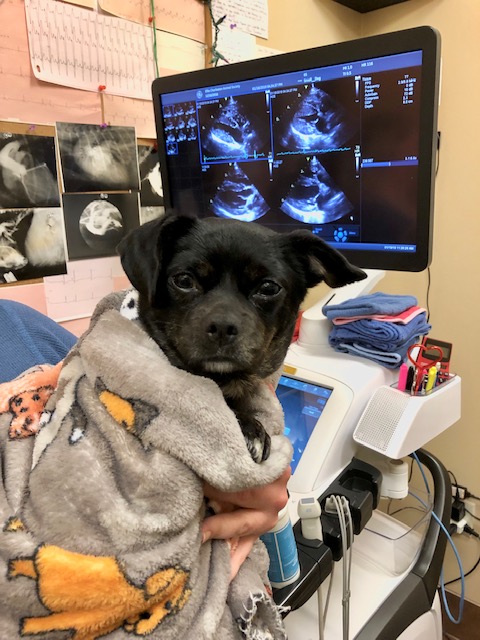
In January, a young dog from Charleston Animal Society was referred to Veterinary Specialty Care for heartworm disease treatment. There was such a heavy worm burden that blood flowing through the heart was physically blocked by a large mass of worms. This is called caval syndrome and can be life-threatening. Quick surgical removal of the heartworms is the only treatment option.
Most pet owners are familiar with heartworm disease. This mosquito borne parasite is extremely prolific in the Southeast. The worms penetrate the dog’s tissue, migrate to the bloodstream, and enter the heart and lungs. Severe damage can occur to vital organs like the heart, lungs, liver and kidneys.
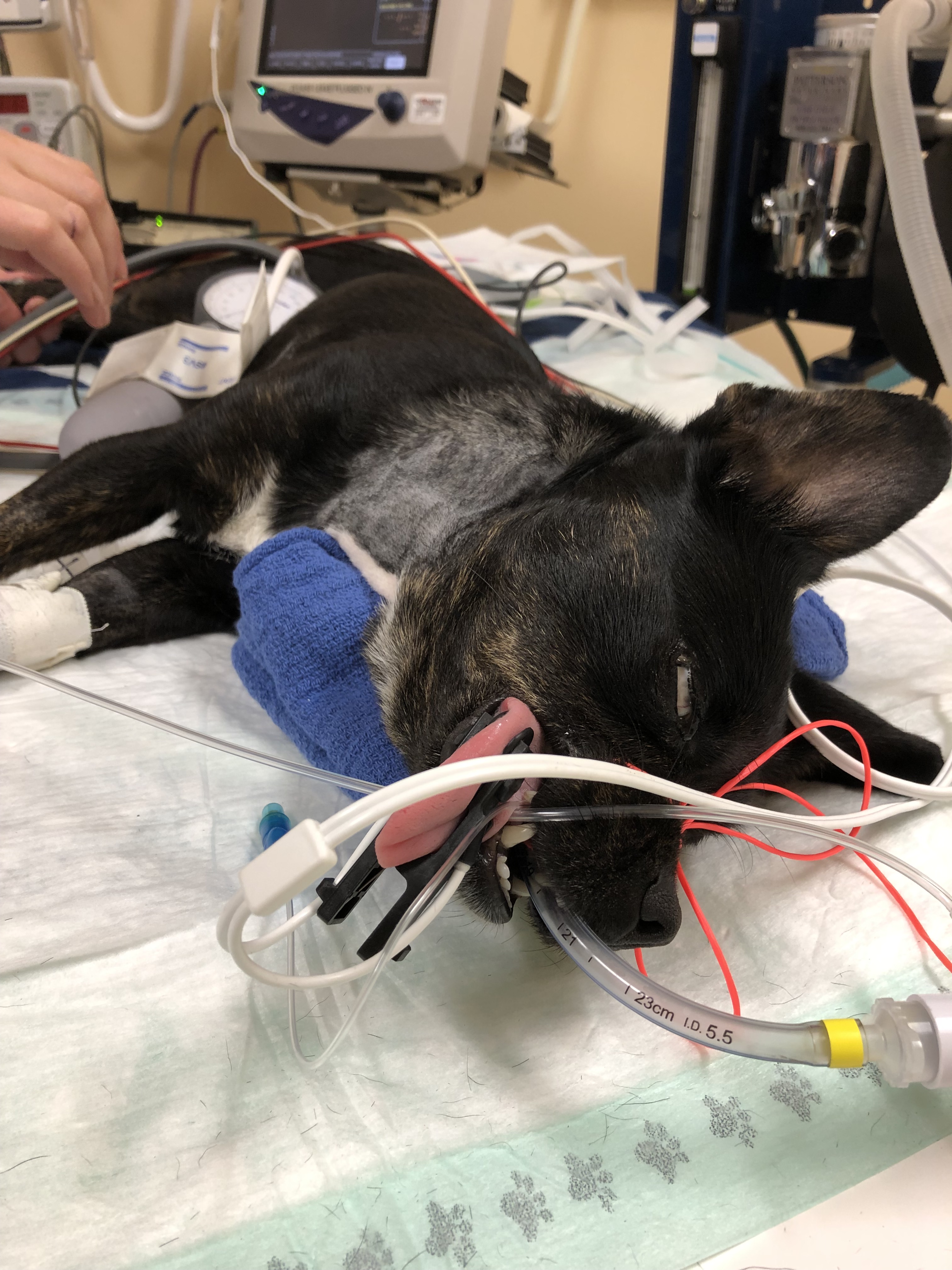
Heartworm removal was accomplished by passing an instrument down the jugular vein, into the right heart, entwining the worms and removing them. The worms were removed and the patient recovered well.
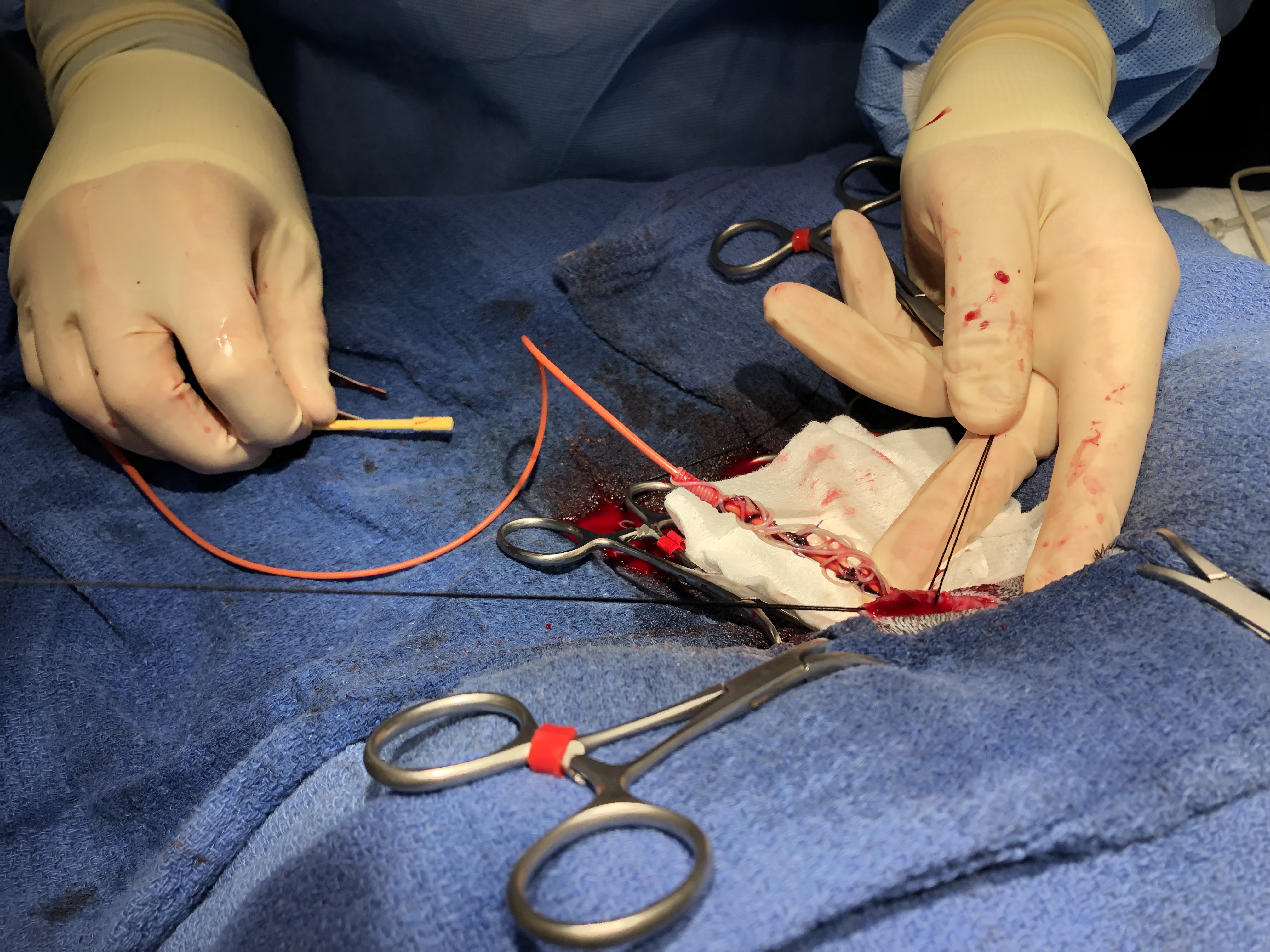

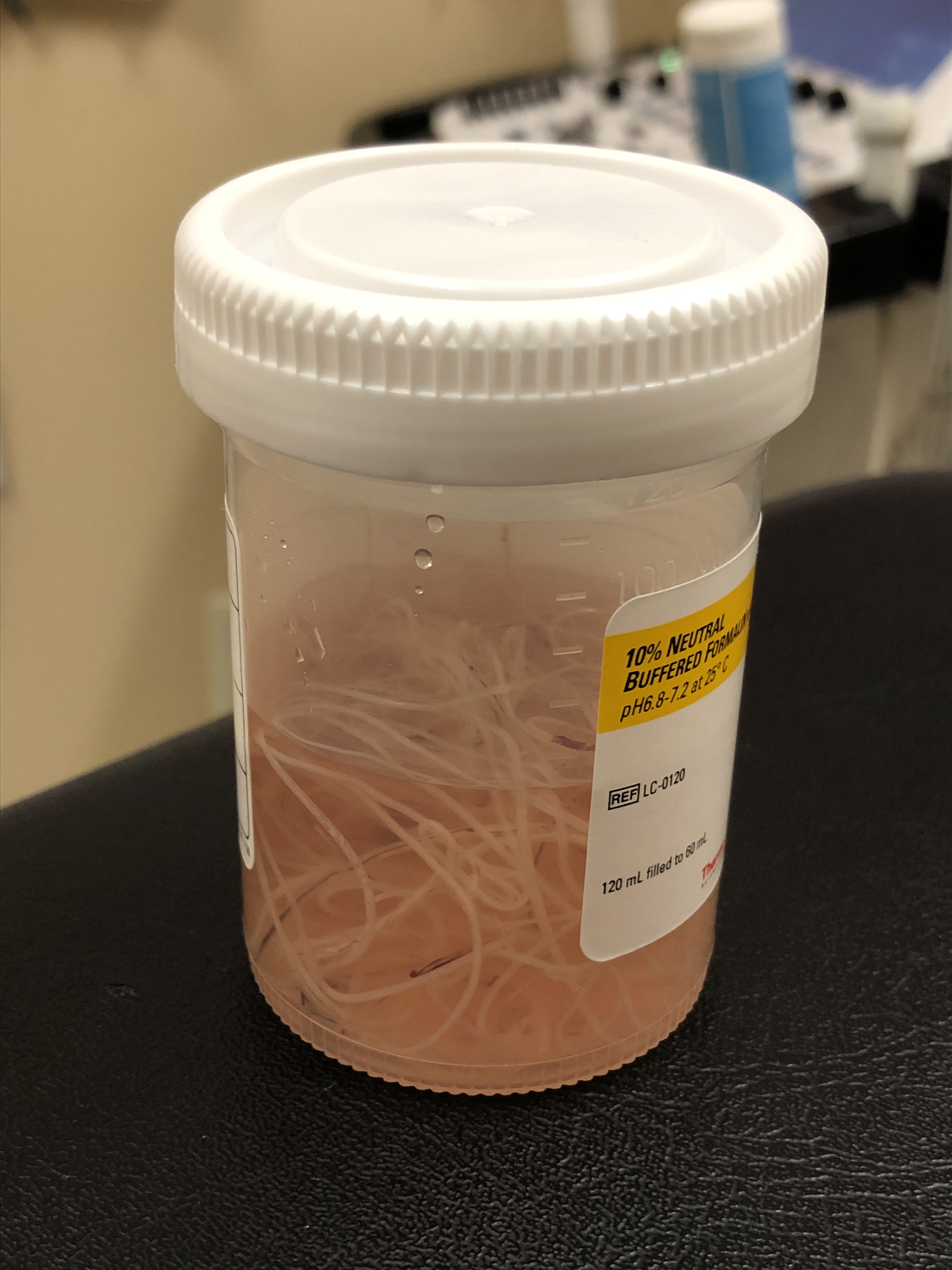
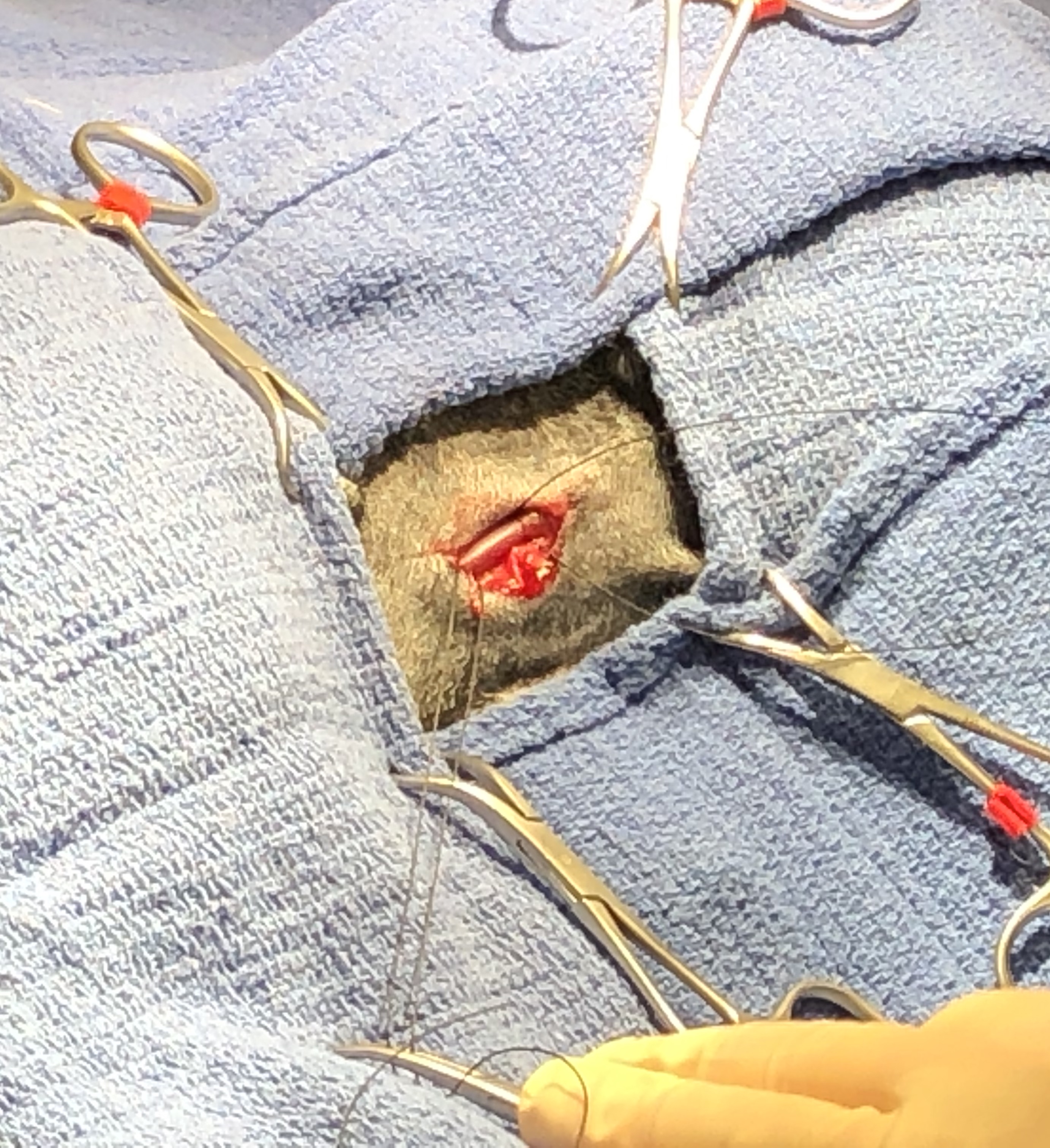
If left untreated, heartworm disease can be fatal, and treatment is expensive and painful for your dog. The good news, however, is that prevention is very effective.
Since mosquitoes need to be present to deliver an infected bite, keep your dog away from mosquito infested areas. Use a mosquito prevention, such as a spot treatment, and give your dog monthly heartworm pills to prevent an infestation.
Regular routine checkups are very important to diagnose this disease. All dogs should be tested for heartworm disease annually. It doesn’t matter if your dog is on a prevention program and is taking anti-heartworm medication – there is always a risk of infection. Consult your veterinarian to understand which prevention plan is best for your dog.

Jake Jacobson
DVM, DACVIM (Cardiology)
National Walk Your Pet and Pet Travel Safety Month by Holly Mims, DVM
Initially when asked to write this blog, I was unsure how to connect the topics and struggled to find a starting point. Needing help, I decided to ask the experts, our technicians Erin and Charlie, as they are not only in charge of walking patients outside, but are also the first to greet pets from owners coming into the clinic. I was amazed at what they came up with!
Right off the bat, they both said “no retractable leashes”! I assumed this was due to the fact that pets on retractable leashes always seem to circle around your feet, creating a tripping hazard for people. While this is one of the reasons that retractable leashes are not ideal, Charlie actually shared that they are dangerous from the standpoint of loss of control of your pet, which could result in a serious injury or even fatality. Earlier this week, while working an ER shift, Charlie witnessed a fatality, when a dog that had been on a retractable leash, ran out into the street and was hit by a car. Another common incident that the ER sees is a dog attack/bite. This can happen when a friendly dog, on a retractable leash, runs over to an unknown dog or when a dog, known to be aggressive, is on a retractable leash and the leash malfunctions. In all scenarios, there is a false sense of security with these leashes; therefore, care should be executed when using them.
Additional concerns when walking pets include temperature and situational awareness. Living in South Carolina, the weather can get hot! Ideal times for walking pets, in the warmer months, are earlier in the day and in the evening. Unfortunately, wildlife tends to be more active during these times, as well, so making sure that your pet will not bolt if they hear noises and keeping them on leash to avoid exposure to wildlife, if on trails, is advised. Additional reasons to keep your pet on leash when walking are to avoid exposure to trash, foreign material, mushrooms, and contaminated water that they might ingest.
The benefits of walking your pet are endless! Walking is a healthy form of exercise (for both you and your pet) and promotes joint health and mobility. It also strengthens the bond between you and your pet and, in most cases, helps to promote relationships with others. How often has a stranger commented “how cute is your dog? Or what is his/her name?!” Getting out and walking increases the chance of speaking with neighbors and, in some cases, helps initiate conversations to make new friends!
Now, to tie it into National Pet Travel Safety Month! Perhaps one of the great stresses when traveling on airplanes with pets is the scenario of having them locked in a crate for hours, not being able to walk outside. I did a little research and found a website that has an interactive map listing the airports, in each state, that have designated pet walking areas. You can visit www.petfriendlytravel.com for more information. Contacting airlines about regulations, as well as being aware of length of travel and the time of year, (weather conditions) is important in planning a flight. Temperatures can vary depending on where your pet will be held during and in between flights. Make sure that there are plans for designated feeding/watering times, required medications to be given, as well as walks if able.
Other important things to remember when traveling with pets include updating microchip information, in the event that you are separated, having a copy of current health/vaccination records and preparing, in advance, to have all required medications with refills on hand. Check all carriers and leashes, prior to heading out on a trip, to be sure they are secure. For car trips, I recommend seat belts or harnesses that are attached to seat belts, for dogs, and that cats be secured in carriers. It is NEVER safe for you or your pet to have your pet freely able to move around the car.

Jack’s Story by Michelle Wall, DVM
Jack Kinon is a 9 year old Standard Poodle that presented to our Internal Medicine service in August of 2016 for severe lethargy and a decreased appetite. His family veterinarian suspected possible gastrointestinal cancer. Our internist performed an abdominal ultrasound and a mass was noted in the small intestine. Jack had surgery performed the following day and a mass was removed from the small intestine. The mass had perforated, but was able to be surgically removed. Jack never missed a beat and revered beautifully post-operatively.
The mass was submitted for analysis and was determined to be lymphoma. Jack never let this subdue him and get him down, he started a 6-month chemotherapy regime as soon as he healed from surgery. With 25 weekly visits, he truly became part of the Veterinary Specialty Care family. Jack is currently 21 months post chemotherapy and is still disease free! He is such a fighter, and his wonderful loving family refers to him as “his majesty.”
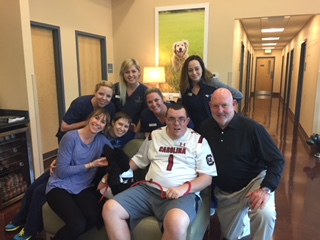
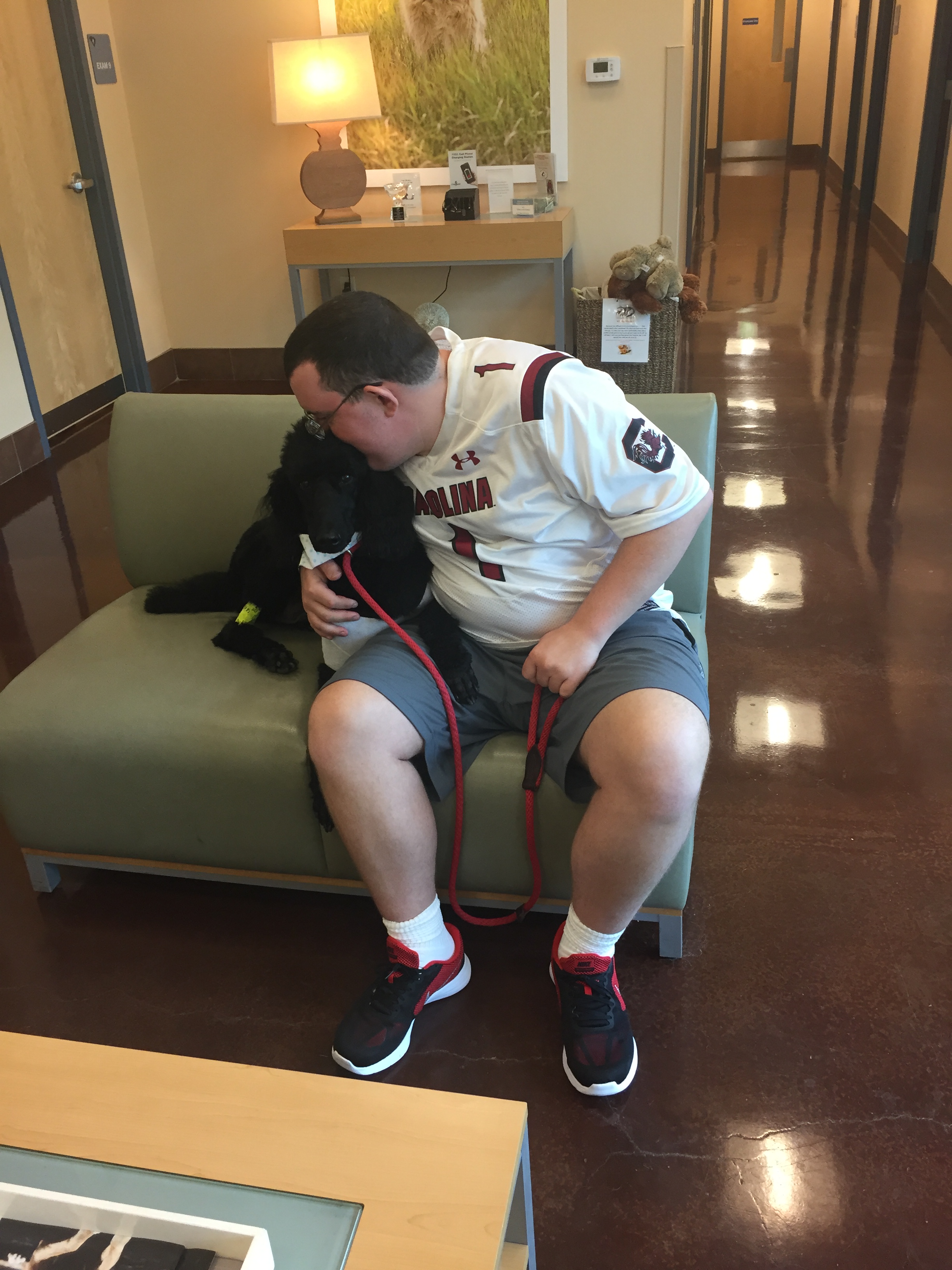
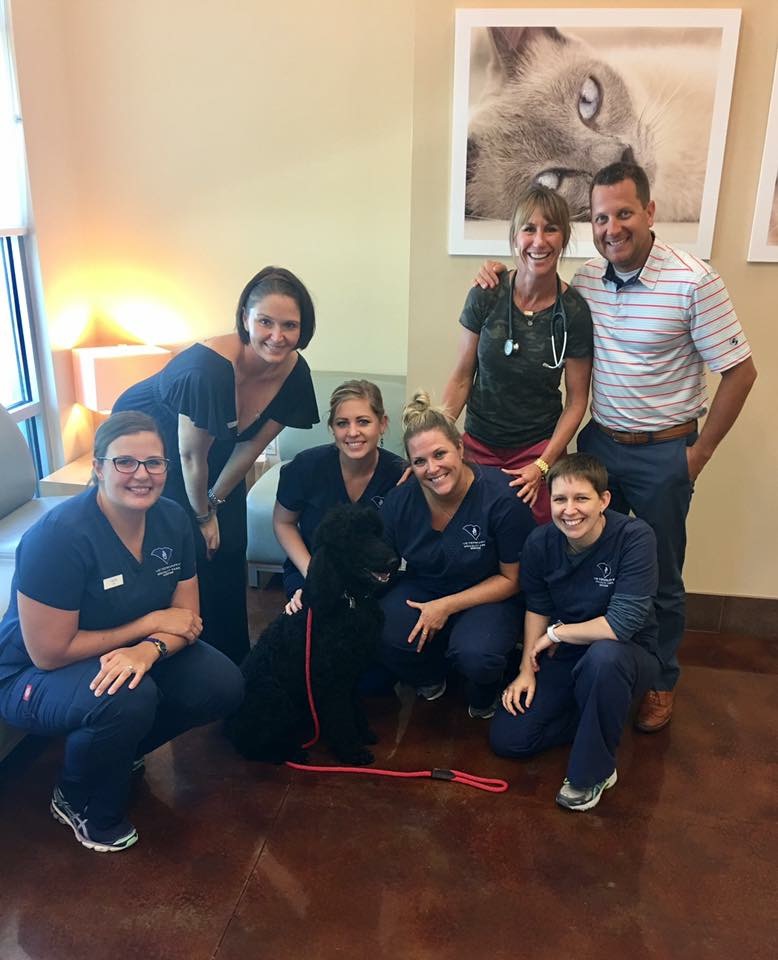
Ways to Keep Your Pet Safe During the Fall/Holiday Season by Holly Mims, DVM
Ways to keep your pet safe during the Fall/Holiday season
I LOVE October! It is my favorite month of the year. Why you ask? It isn’t due to Starbucks pumpkin lattes although I do enjoy these immensely! I love October because it is the start of the cool weather in Charleston and what I like to call the “season of anticipation”. The temperatures tend to drop a little towards the end of the month and you can start to feel the growing energy leading up to the holidays. October also happens to be Animal Safety and Protection Month and so I thought I would offer a few reminders of how to make sure they stay safe and enjoy the Fall/Holidays.
1) Remember that it it still hot outside during the day. Continue to make sure your pets have access to adequate water and shade.
2) Continue to be wary of waterways, brush, shaded areas, and allowing off trail running. Snakes are still out there and still active.
3) Perhaps this should be #1. Continue heart worm prevention! In South Carolina, heart worm preventative is recommended ALL YEAR LONG. We still do have mosquitoes that can transmit heart worm disease in the Fall/Winter.
4) Halloween will be here before you know it. Be vigilant about what you (or your kids) leave out. I had to endoscopically remove 5# of fun size MM and Kit-Kat packets from my lab Ariel’s stomach one Halloween after setting out the “grab bucket” on Halloween night! Chocolate can be toxic!
5) Thanksgiving is a time for feasting and being thankful. Remember to secure the garbage can lids so that your pets don’t get into them and get GI upset or ingest something that could cause obstruction (corn cobs, turkey bones,etc).
6) Christmas time brings decorations. Tinsel is particularly bad for cats who like to ingest it. Poinsettias can cause oral ulceration, salivation, and GI upset. Breakable ornaments can get knocked down creating to potential for lacerations. Extension cords can get chewed on by puppies (and older pets) resulting in electrical shock.
7) When ringing in the New Year, remember to plan in advance if your pet has any noise anxiety. Getting medications on board before the festivities begin can really make a big difference! Also, be sure they are not left in a place that they can destroy or escape from. Crating your pet if they have anxiety can help keep them calm and prevent them from hurting themselves or running away.
8) Finally, left unattended, candles can lead to severe burns and potentially even fires in your house. Perry and I got lucky one year when we smelled burning hair only to find that Big Winky, our long haired cat, was standing by a lit candle with her tail on fire! Fortunately, no harm was done, but it could have been terrible!
Hopefully, these reminders will help you all enjoy the Fall/Holidays safely!

The Story of Willow
At Veterinary Specialty Care, our days are filled with a plethora of furry patients. All of these pets are special to us and we pride ourselves in giving our patients the best care that we possibly can. Some of these pets we may only meet once, some we have affectionately deemed ‘frequent flyers’ and are blessed to have the chance to get to know, and care for, throughout their journey through life and any obstacles that they may encounter. Though many will walk through our doors, some will leave a lasting impression on the minds and hearts of our staff members. Sometimes, it isn’t just the patient but the owner(s) that we bond with as well. Willow is one of those dogs and this is his story.
In mid-May of 2018, Willow presented to Dr. Mims with our Internal Medicine department in North Charleston. Willow was exhibiting symptoms of a fever, diarrhea, inappetance and rapid weight loss. Our Internal Medicine department performed bloodwork and an abdominal ultrasound which showed that Willow was suffering from a mass in his small intestines. The findings were pointed to either a benign mass, fungal disease, or that scary C-word, cancer. Surgery was the recommended plan, to remove the mass and find out exactly what was being dealt with. Dr. Mims scheduled Willow that next morning for mass removal with Dr. Bianucci at our Surgery department in Mount Pleasant. The mass was a ‘proximal jejunal mass-intraluminal’ (mass on the small intestine). Dr. Bianucci felt confident in the surgery and the removal of the mass and it was sent out to the lab for testing. It would be a few days before biopsy results were received. Willow stayed overnight for post operative care, as is the norm for any invasive surgery.
Fast forward several days — the test results came back. The mass was deemed malignant – lymphoma. Lymphoma is a very common cancer of dogs and is one of the most common forms of cancer in dogs that we treat here at Veterinary Specialty Care. It is not known why certain dogs develop lymphoma. In some dogs there is an underlying genetic component and in others there are no predisposing factors. Lymphoma usually arises in the lymphoid tissues of the body (lymph nodes, spleen and bone marrow), though lymphoma can affect any part of the body. In Willow’s case the lymphoma was located in the GI tract.
For those that don’t know, there are five stages of lymphoma (I – V) and these stages are based on what areas of the body are involved with the lymphoma. With stage I lymphoma, only one single lymph node is involved, or a single lymphoid organ. Stage II lymphoma, means that the lymph nodes are enlarged on one side of the diaphragm. With stage III lymphoma, which is the most common form, lymph nodes on both sides of the diaphragm are enlarged. If the liver and/or spleen are involved this is classified as a stage IV. Stage V lymphoma is when it is in the blood, bone marrow, or organs other than a lymphoid organ such as the eye, skin, nervous system, or gastrointestinal tract. A PARR test was done to determine the type of lymphoma Willow had; and it was determined that he had Stage V, T-cell gastrointestinal lymphoma.
According to the literature, T cell lymphomas have shorter remission and survival times (usually of approximately 6 months average survival), but we have certainly had T cell lymphomas and stage V lymphomas that live much longer than 6 months with a very good quality of life. Lymphoma is the most chemotherapy responsive tumor that dogs have, so we always encourage owners to treat lymphoma patients with chemotherapy. Approximately 92% of dogs with lymphoma will go into a state of remission after the first 1 – 2 treatments.
Because of the good response of lymphoma to chemotherapy, it was recommended that Willow start chemotherapy under the care of our oncologists, Drs. Taylor, Wall and Angelo. Chemotherapy treatment involves a variety of drugs that destroy only rapidly growing cells, (like most cancer cells), and some healthy cells that are innocent bystanders. These drugs may be administered orally, subcutaneously, or intravenously. Fortunately, unlike humans, animals generally have mild side effects from chemotherapy.
Over the course of 2 months, 3 chemo protocols were employed (CHOP, MOPP and CCNU). When one started to show ineffective, we would move on to another. Throughout the entire process, Willow’s parents were concentrated only on his quality of life, getting Willow feeling well with as little complications and side effects as possible. They did not want Willow to feel any pain. Affectionately referring to the Oncology technicians as Willow’s ‘girlfriends’, they would often bring in special treats. Willow’s parents constantly did everything they could to make sure Willow was enjoying life, not suffering, and even lovingly poked fun at cancer at times. Trips were made to Willow’s favorite places like the beach, the neighbor’s house, family photo sessions were done; they even created a Facebook to share hopeful thoughts and Willow’s story, appropriately naming it, ‘Willow the Warrior’, @willowpunchescancer. To remain in such positive spirits, his parents were determined to do everything in their power to help Willow, while facing such a difficult battle, and that is truly amazing.
On a mid-August day, after a downhill battle for 2 days and being so weak he could hardly stand or walk on his own, Willow’s parents knew it was time. Our staff members cried along with Willow’s parents; they had become like extended family to us in the last few months. A few short days after Willow crossed the rainbow bridge, his mom celebrated her birthday by bringing pizza to our staff, thank you cards and photos to share of Willow. Though Willow’s body is gone, his soul and spirit will never be forgotten and the bond between Willow and his parents, and their selflessness and dedication throughout Willow’s journey, have truly touched the lives of all of us here at Veterinary Specialty Care.
Some thoughts from Willow’s friends here at VSC:
“Willow was a special dog with a loving family by his side from day
one. He had a very aggressive disease but always managed to have a
wag for everyone here at the hospital.”
-Dr. Gabrielle Angelo, DVM – Oncology
“Willow was such a sweet boy, always up for a cuddle! He was so lucky to have a family that loved him unconditionally and will stay in our hearts forever”
– Simone, Client Service Representative – Internal Medicine
“I could tell that he [Willow] meant a lot to her and that she [his mom] would do anything for him and was not ready to give up. They sent me a lovely thank you card this week along with a picture. It is cases like this that remind me that each family and their hopes/expectations/values/beliefs are different and our job is ALWAYS to provide the best medical advice and to give options. Some families might not have moved forward with surgery and might have considered humane euthanasia due to the initial findings. Some families might not have pursued chemotherapy. Some families might feel like the additional 3.5 months of quality time was not worth the expense. Not the Punch Family. She was so grateful for the additional quality time with Willow. While I am sad that he has passed, I was glad to hear that it was peaceful and surrounded by his loving family.”
-Dr. Holly Mims, DVM – Internal Medicine
“I had the great pleasure of working with Willow and his parents during his chemo treatments. There are so many things that I loved about him and his parents but the one thing that sticks out is how thankful they were for the time that they had with him that they would not have had without chemo. People always ask how we do what we do because it is so sad, Willow’s parents hit the nail on the head.”
-Christi, Technician – Internal Medicine
“Willow and his family were so kind to us girls up front every time they came in even when things were not going well for them. Willow was such a sweet boy and always loved attention. We always loved giving him some cuddles when in treatment area in back. He is so missed around here as we are always talking about them up front!!!!”
-Coranna, Client Service Representative – Internal Medicine

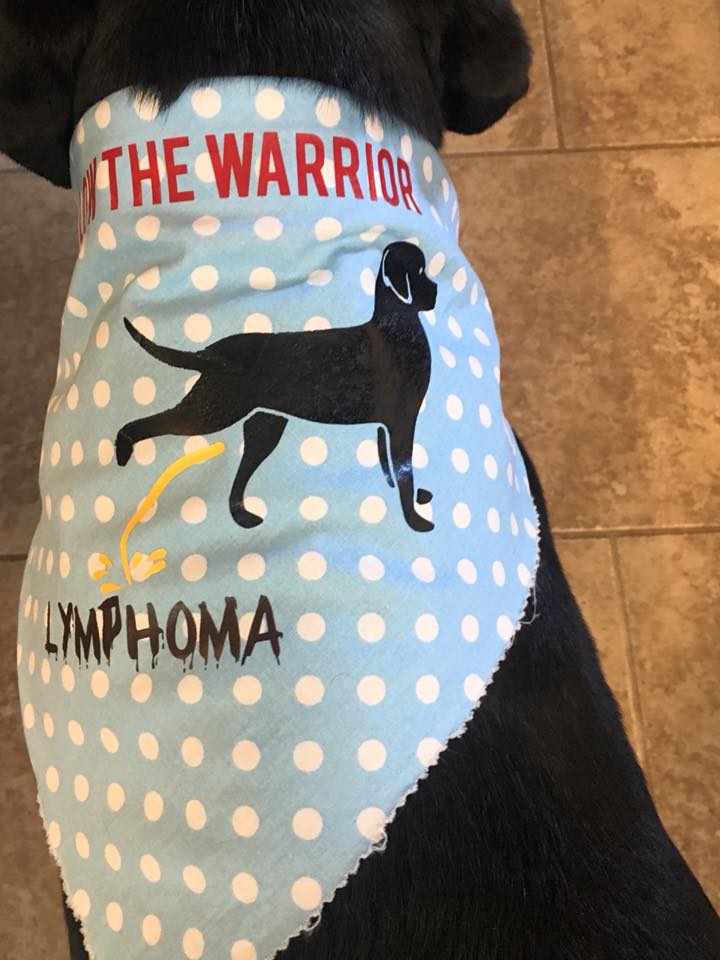
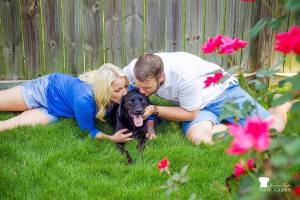

Growth Plate Fractures by: Dr. Mike Schlicksup
Growth plate fractures, also known as Salter Harris type fractures, are a common cause of lameness seen in young dogs (under 8-12 months of age). The growth plate is a soft area of the bone that is responsible for the increase in the length and formation of bones. Since they are softer spots of the bone they are weaker then the remaining areas and can lead to fractures. Common places include the femoral head (ball of the hip joint), distal femur (above the knee joint), tibial tuberosity (front of the shin bone) and within the distal humerus (above the elbow). Surgery is typically recommended as the primary treatment option since these fractures are usually associated with the joints and can lead to angular deformities or chronic limping if they do not heal properly. The hope is that with surgery the fracture is repaired and some portion of the growth plate continues working, which allows for continued growth.
Last Friday Dr. Schlicksup saw two cases of tibial tuberosity growth plate fractures in a young Yorkie, Prada, and a young mixed breed, Guinness. In this specific type of fracture the patellar ligament (attached to the kneecap and quadriceps muscles) pull the tibial tuberosity (front of the shin bone) loose. In most cases it does not completely break free and instead only partially pulls loose. X-rays show an image of the normal growth plate at the front of Prada’s shin bone (figure 1) and the fractured growth plate in her and Guinness (figure 2 and 3). Surgery is performed to prevent the piece from breaking free completely, because once the tuberosity lifts up, it allows the kneecap to ride higher then normal and can lead to kneecap (patella) luxations. Both cases had surgery early Friday morning. The procedure takes a little over an hour and the fracture is repaired using stainless steel pins and wires (Figure 4) to form a tension band apparatus. Both Prada and Guinness recovered in ICU that night and were discharged early Saturday morning. Recovery is usually around one month at home and most dogs return to full function after the recovery. We wish both of them good luck in their recovery and we will see them in 2 weeks to remove the staples and in one month for follow-up x-rays.

